History originally published in AutoWeek August 29, 1983
It’s a bullet, big bore and Magnum-packed, a missile, ICBM for the Interstate, pregnant with malice. It has the shape of motorized malevolence and the punch to back it up.
The Maserati Bora is surely the most masculine, most testosterone-loaded design ever to come from the pen of Giugiaro, capable of assault through looks alone. It’s a tough guy, a mean hybrid, a Franco-Italian half-breed born from the fiscal coupling of Citroen and Maserati.
It happened this way: In 1968, Citroen acquired a controlling interest in Maserati, the object being an engine for its SM, then in development. Maserati, in one of its occasional bouts with insolvency, got survival out of the deal. Survival and a chance to modernize its product line and a few of Citroen’s hydraulic tricks to boot.
At the time, Maserati’s flagship was the Ghibli, beautiful and sexy but relatively speaking a boulevardier. For very fast boulevards, to be sure, but alongside the competition its front engine and live axle layout it was dated.
The Ghibli did not have, after all, a midship engine, that sine qua non of exotics since the introduction of the Lamborghini Miura in 1966. Thus the Bora.
For an exotic, the Maserati Bora is a straightforward kind of car. The chassis is unit-body with a tubular sub-frame for the engine-transmission package. The powertrain is conventional for mid-engine car, with the engine placed longitudinally and ahead of a ZF five-speed transaxle.
The engine is, of course, Maserati’s double overhead cam V-8, brought over from the Ghibli with only a relocation of the accessories. Under the black crackled cam cover is 4930cc of oversquare displacement, at least for all the U.S. engines. Early European versions measured in at 4.7 liters. You can’t see them because of the traditional Maserati giant twin-snorkeled air cleaner, but there are four dual-throat downdraft Weber 42DCNF carburetors mounted atop the latticework intake manifold. This melange of four carbs, four cams and eight cylinders produces somewhere in the neighborhood of 350 horses, with the redline at a low-as-usual-for-Maserati 5500 RPM.
The Maserati part of the car is quite conventional, but conventionality ends with Citroen’s contribution: hydraulitrickery. There is an engine-driven high-pressure pump which applies the brakes (four-wheel ventilated discs) through two hydraulic accumulators, and also powers the side windows, raises the headlights and adjusts the driver’s seat and the pedals. Missing, though, is Citroen’s self-centering power steering, unnecessary in a car with no engine over the steering wheels.
There isn’t much up front, just the radiator, the battery (ahead of the passenger’s feet) and the giant box-shaped trunk. At least it’s big for front-of-the-car trunks, measuring at 5.7 very usable cubic feet. If you and a traveling companion can’t fit all your luggage into that, you are simply trying to take too much.
There is no storage in the rear, though the spare goes right over the transaxle and there is a cubby to the left of and behind the driver which is useful for storing necessary oddments. Not that there isn’t any interior space to the rear. A glassed-in room over the engine compartment lid and under the rear window would be perfect for starting tomatoes in the winter. The world’s fastest greenhouse?
Gary Wood, co-owner of M and W Import Motors, a foreign/exotic service/repair restoration establishment in Port Republic, Maryland, owns one of these galloping gardener’s delights, a 1975 version complete with federal bumpers. Actually, this is one car on which the Nader-bashers appear appropriate, if not even look good. The original European Boras had chrome bumperettes, too dainty for the cars character. The wall-smashers, though, have a flat-black stealthy look to them, and are a lot more aggressive, visually and physically.
Inside the Bora is more rocket fantasy. First the seats: Really they’re more like lounges, the lower sections running way forward, looking like refugees from the Hollywood space program of the ‘50s. And gauges, enough for a flight to Mars. Or over Moscow maybe. The only disappointing part is the off-setting of the pedals to the right of to clear the front wheel arch. Fiat 850 drivers feel right at home, but everyone else wonders what went wrong.
The gearshift is a short stub, and the shift pattern is the classic racing five-speed arrangement with first to the left and back. There’s no positive lockout on reverse, but it’s way over and not easy to find accidentally. First coming down from second is easy to miss until the spacing is learned, but with that motor you might as well leave it in second.
In fact, second gear could suffice for most of the driving done in America. It’s good to 80 mile-per-hour. In fact the overall gearing is quite long legged, despite the 3.77 final drive, as both fourth and fifth are overdrive. Using 6000 RPM – disregarding the conservative 5500 RPM redline – 160 MPH is possible in fifth.
Acceleration comes easily to the Bora. The V-8 pushes the 3,500 pound car past illegal speeds with utter casualness, all very offhand. Cruising at time-shrinking speed is as natural as ugly on a monkey, and 55 can be done with the carbs on idle jets.
But the Bora is no back roads natural. It feels big and wide on a narrow road. The feedback through the rack-and-pinion steering is excellent, but provides a constant reminder of the weight of the car. The view from the cockpit doesn’t help, as all one sees is a multi-gauged dash and the peak of the left front fender. There is a hood out there, but the driver doesn’t see it.
The Bora will actually make very good time on a winding road. The engine rockets the car from corner to corner and the cornering limits – thanks to the 215/70×15 tires – are high, and the car feels balanced. But it takes a lot of concentration. It’s an automotive Al Haig: It will follow orders, but if there’s a vacuum of command it will take over. Just be authoritative and don’t try to steer with suggestion.
The brakes are effective but unnerving at first. Though Maserati opted for conventional brake pedal (rather than the Citroen “mushroom”), the hydraulics can be felt actuating as a pulse. It’s strange the first few times, then one becomes accustomed to it…almost.
The Maserati Bora is a purebred pavement projectile, surely as any of its rivals. The Bora, however, never achieved the notoriety of its competition. There are, perhaps, several reasons. The Bora, arriving as it did in 1972, came late. The Miura had been around since 1966. De Tomaso’s Mangusta was introduced in 1969, the Pantera in 1971. The humble Porsche 914 appeared in 1969. The Dino 246GT bowed in 1967, and although Ferrari’s Berlinetta Boxer didn’t enter production until 1973, well, Ferrari can get away with that. Maybe most telling is the fact that Lamborghinis second-generation mid-engined Countach came out in 1973, when the Bora was only a year old. Maserati’s new kid was old hat.
Of course, as exotics go, the Bora is conservative, being both relatively practical and not terribly bizarre in the styling department. And with only eight cylinders, one’s neighbors aren’t nearly as impressed as had there been 12.
OPEC’s influence can’t be discounted either. Not that fuel prices made potential buyers of a $25,000 (1972 price) car look elsewhere for transportation. It was those dirty looks you got for aiding and abetting the Arabs that did it.
When Bora production ended in 1980, about 570 had been built. (That’s the Maserati club’s figure. The factory shrugs off inquiries with an “about 500.”) Most of those were made prior to 1975 when de Tomaso bought into Maserati. The last 50 Boras were imported into the U.S. in 1977, thereafter leaving the Merak to carry the mid-engine Maserati banner. The Bora didn’t fit de Tomaso’s plans for Maserati, like cars such as the Quattroporte and the Biturbo. The Bora was a car from another era.
All of which is missing the point. Which is that the Bora is one killer car, blunt is a bomber and as mean as it looks. And for those few lucky enough to own the Bora, there is no better treat then to roll that rocket out of the hanger and light the fire in the tailfeathers, take it F-15-ing over the landscape. The cruise missile lives, and it wears the sign of the trident.





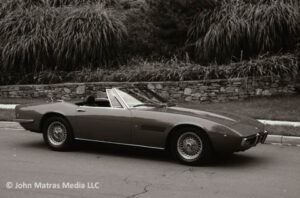
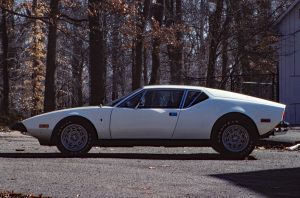
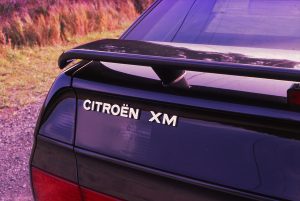
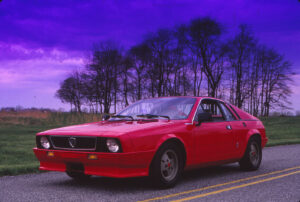
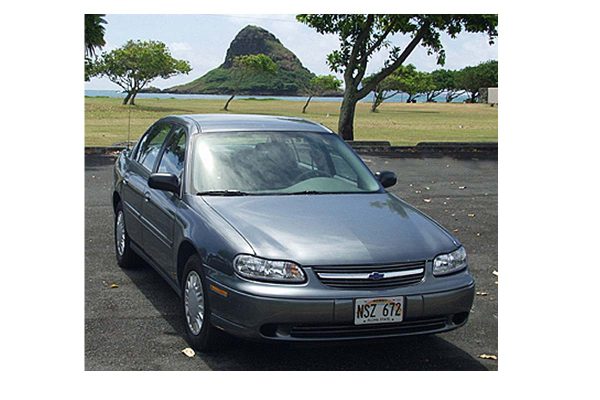
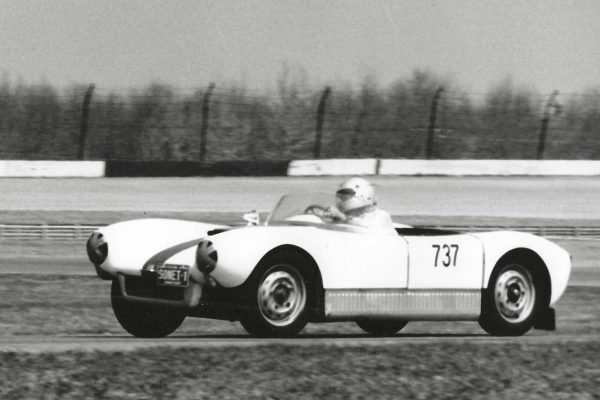
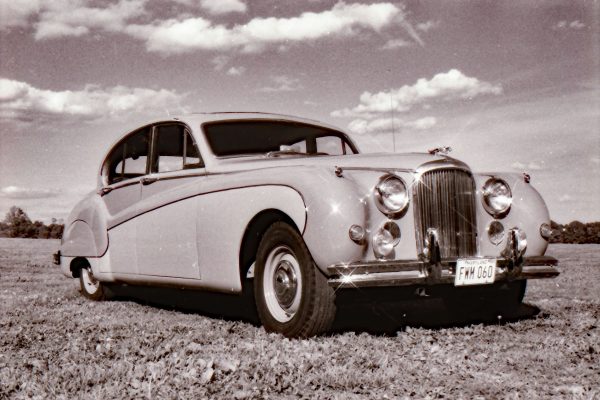
What Do You Think?
You must be logged in to post a comment.